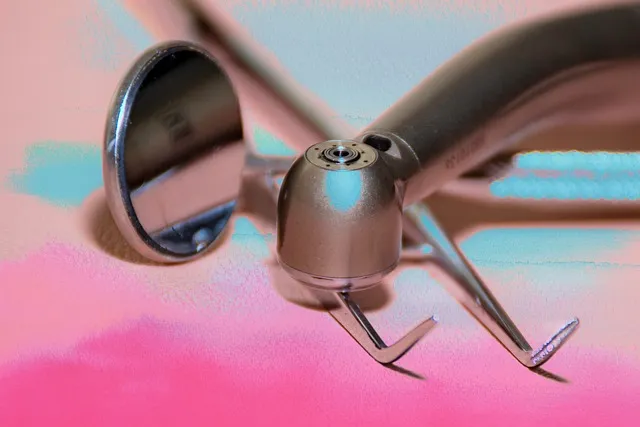
Introduction:
Providing dental care to pediatric patients can be a rewarding yet challenging experience, especially when faced with anxiety or uncooperative behavior. Effective communication is key to building trust and ensuring a positive dental experience for both the child and the dental professional. In this blog post, we will explore practical tips for communicating with anxious or uncooperative pediatric patients to create a supportive and comfortable environment.
1. Establishing Trust and Rapport:
Tip: Building a trusting relationship with pediatric patients is foundational for successful communication.
Strategy:
Friendly Introduction: Begin each interaction with a warm and friendly introduction to create a positive atmosphere.
Age-Appropriate Communication: Tailor your communication style to the child’s age, using language and tone that are relatable and engaging.
Positive Reinforcement: Offer praise and positive reinforcement throughout the appointment to encourage cooperation.
2. Visual Aids and Desensitization:
Tip: Visual aids can help alleviate anxiety and make the dental environment more familiar.
Strategy:
Show and Tell: Use show-and-tell techniques to introduce dental instruments, equipment, and procedures in a non-threatening way.
Child-Friendly Models: Utilize child-friendly models or illustrations to explain dental concepts and procedures visually.
Virtual Tours: Provide virtual tours of the dental office or share videos showcasing the dental process to demystify the experience.
3. Clear and Simple Explanation:
Tip: Use clear and simple language to explain procedures and alleviate anxiety.
Strategy:
Avoid Dental Jargon: Minimize the use of complex dental terminology and explain procedures in simple, age-appropriate terms.
Step-by-Step Explanation: Break down procedures into step-by-step explanations to help the child understand what to expect.
Encourage Questions: Encourage the child to ask questions and address any concerns they may have during the explanation.
4. Non-Verbal Communication:
Tip: Non-verbal cues play a crucial role in conveying a sense of calm and reassurance.
Strategy:
Smile and Maintain Eye Contact: Smile often and maintain eye contact to convey a friendly and approachable demeanor.
Gentle Touch: Use gentle touches when appropriate, such as placing a hand on the child’s shoulder for reassurance.
Comfort Items: Allow the child to bring comfort items like a favorite toy or blanket to create a sense of familiarity.
5. Distraction Techniques:
Tip: Distraction can redirect the child’s focus and alleviate anxiety during dental procedures.
Strategy:
Child-Friendly Distractions: Use age-appropriate distractions, such as a TV show, music, or interactive games, to engage the child’s attention.
Tell a Story: Create a narrative or tell a story to divert the child’s focus from the dental procedure.
Counting or Singing: Incorporate counting or singing as a distraction technique, involving the child in a fun and interactive way.
6. Involve the Child in Decision-Making:
Tip: Empowering the child with choices can enhance their sense of control and cooperation.
Strategy:
Offer Choices: Provide the child with choices when appropriate, such as selecting a flavored toothpaste or choosing a preferred chair.
Ask for Preferences: Inquire about the child’s preferences, such as the order of procedures or whether they would like a token or sticker at the end of the appointment.
Positive Reinforcement Options: Discuss positive reinforcement options, allowing the child to choose a reward for their cooperation.
Conclusion:
Effective communication with anxious or uncooperative pediatric patients is a skill that can greatly influence their dental experience and long-term oral health. By establishing trust, using visual aids, providing clear explanations, incorporating non-verbal communication, using distraction techniques, and involving the child in decision-making, dental professionals can create a positive and supportive environment. Remember, patience, flexibility, and a child-centered approach are essential elements in fostering cooperation and ensuring a positive dental journey for pediatric patients.
Muskan.ai – An ecosystem powered by Artificial Intelligence for dentistry.
Introducing Muskan.ai, a cutting-edge ecosystem driven by Artificial Intelligence tailored for the field of dentistry. Our innovative AI engine seamlessly integrates with a suite of AI products, empowering dentists to elevate their practice. Through this integration, dentists can optimize their workflow, save valuable time, and concurrently boost their revenue.
With our advanced AI-based radiography analysis tool, dentists can enhance patient treatment acceptance rates and obtain a valuable second opinion promptly. Our AI-powered oral hygiene checkups provide dentists with insights into a patient’s dental status, allowing for efficient time management and enabling the feasibility of tele-dentistry. Patients can conveniently connect with their dentists through a user-friendly mobile app.
Meet DAISY, our AI-powered dentalGPT, designed to interact naturally with patients, addressing their minor queries regarding dental health. In addition to these features, we are at the forefront of championing AI-based Oral Cancer Screenings, offering timely interventions and facilitating recovery without resorting to invasive treatments. Muskan.ai is not just a technological advancement; it’s a transformative force enhancing both dentistry practice and patient care.



